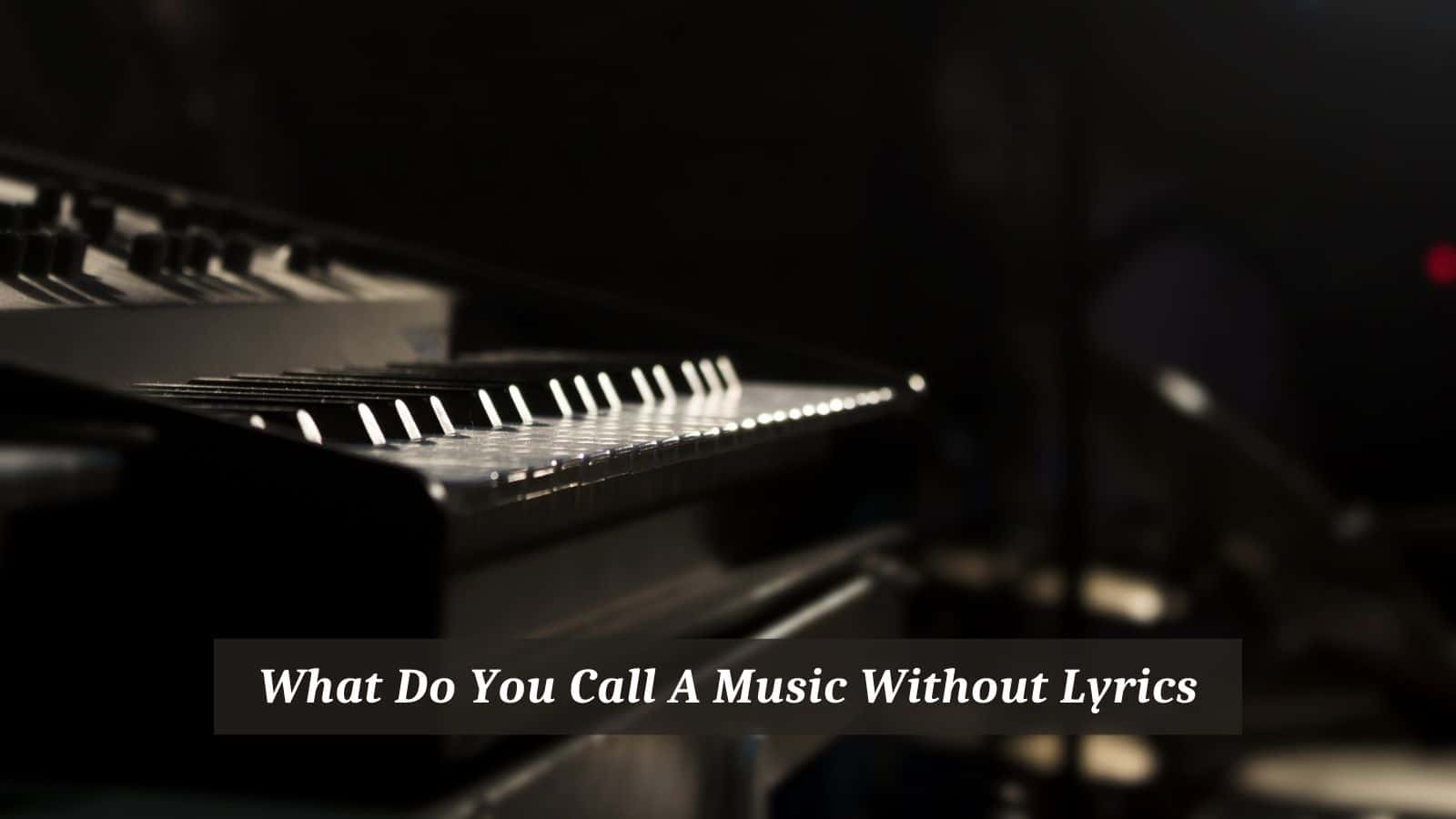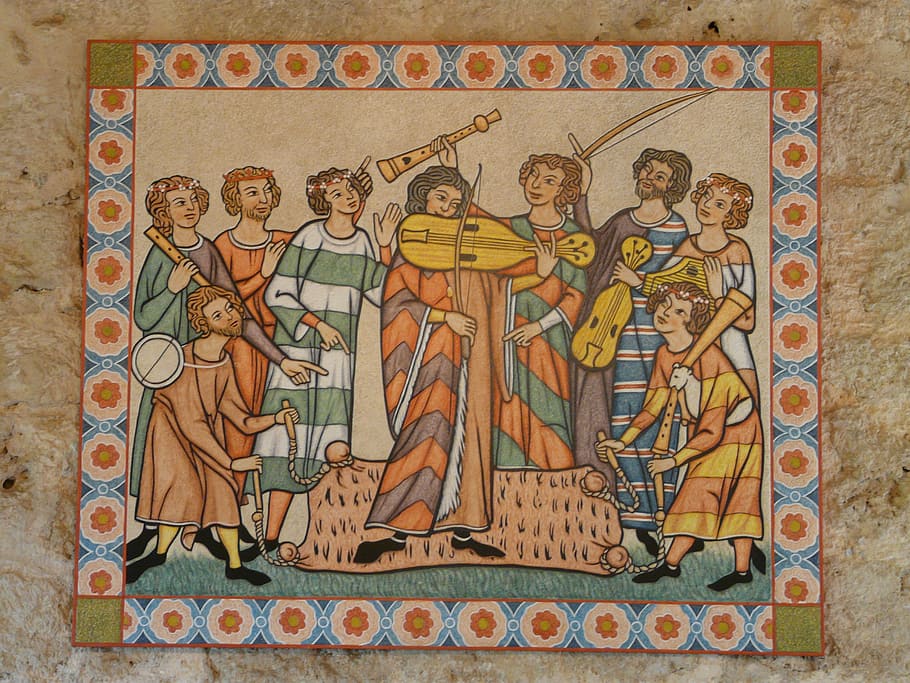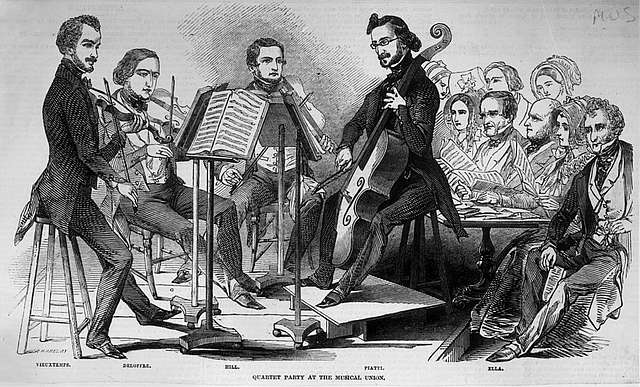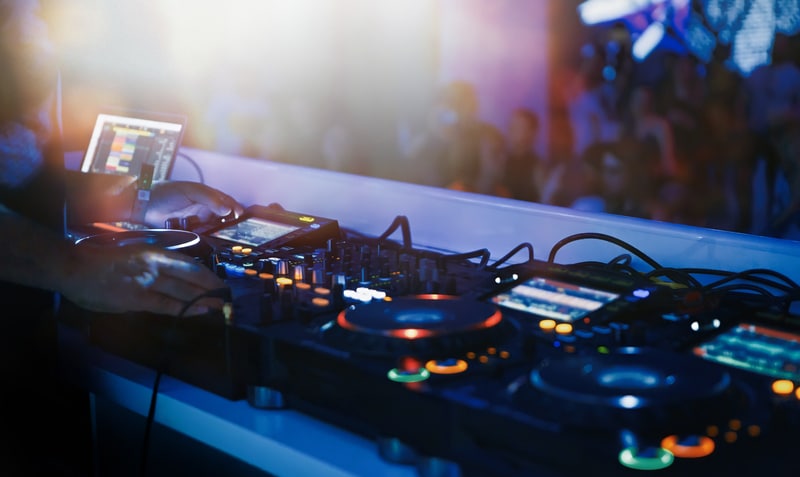
Simply put, music without lyrics is called instrumental music. But before you think it is a genre, stop right there; it isn’t.
DISCLOSURE: This post may contain affiliate links, meaning when you click the links and make a purchase, we receive a commission.
Instrumental music covers a wide range of styles of music and can be applied to a wide variety of genres. If we were to try and list all the types of instrumental music, the list would be endless, and you’d get tired of reading.
What Do You Call Music Without Lyrics
Prehistoric Music
The earliest instrument our prehistoric ancestors discovered was likely the human voice. However, that would be considered vocal music—not our focus today. Prehistoric music is placed around ca. 4,000 BCE to 500 CE. We have to dig a bit deeper into the mists of time
While we do not have surviving scores of the ancient Egyptians’ music, they left behind many wall paintings, which gives us an idea of their instruments. Instruments can be found in many preliterate cultures.
Since 1984, six complete bone flutes dating to 6,000 BCE have been found in the Henan Province of China. These flutes are known as Jiahu gǔdí, or ‘bone flutes.’ You can listen to their sound here. You can learn more about prehistoric instruments by following this link.
Ancient Egyptian music influenced Greek music and shaped Western music’s development. In ancient Greece, music was an integral part of life. It was featured in religious festivals, marriage, and funeral rites, during banquets, and perhaps even in plays (just like our modern film music).
Our knowledge comes from fragments of ancient scores, numerous literary references, artifacts of instruments, and depictions of musicians playing instruments on pottery, according to The Met’s Heilburnn Timeline of History.
Medieval Period, ca. 500–1400
Much of the music during this period focused on church music and glorifying God. The absence of instruments in the early medieval period could be because these were regarded as pagan in origin and did not have a place in a then-modern society.
But, behind closed doors, people still made and enjoyed the music. As a result, many instruments have survived in private and museum collections.
While the church was wealthy and could dictate the kind of music they wanted, private patrons had even more wealth. They had court musicians who would entertain them with vocal and instrumental music. You can learn more about medieval instruments here.
The Renaissance, ca. 1400–1600
Things sped up during the Renaissance—skilled engineers, poets, writers, architects, and artists started rising to the top. Improvements in musical instruments also emerged. The invention of the printing press revolutionized how people could access information.
Printed sheet music saw the light in 1501, and composers could now have their works played across the continent. Although vocal music was still present, the ensembles accompanying such music grew.
Banquets held at the courts of Europe would also have dancing, and where there’s dancing, you’ll need musicians to provide the music.
Secular music gained popularity as time went on, and instrumental music allowed amateur players to perform music together during gatherings at people’s houses.
A gem that stands out from the late Renaissance is Gabrieli’s Sonata Piano’e Forte for brass’ choirs’ at opposite ends of St. Mark’s Basilica in Venice.
The Baroque Period, ca. 1600–1750
During the baroque period, composers established the foundation for numerous—the sonata and concerto can be traced back to this Period.
Suites for solo instruments were also prevalent during this Period, for example, JS Bach’s Six Suites for Solo Cello. In this set of pieces, each ‘part’ is composed as a popular baroque dance.
Instruments became more sophisticated, and players and composers established more comprehensive ranges of playing techniques. Virtuoso players (and singers) arose and stretched the limits of their artistic abilities.
This, in turn, inspired instrument makers to build better instruments. Music was a serious business for both instrumentalists and makers.
Classical Period, ca. 1750–1820
The orchestra was not hidden away for the first time but became a showpiece in the Classical Period. Innovations such as the symphony and string quartet became beloved forms of instrumental music.
In addition, solo instrumental music rose in popularity, as seen in sonatas composed for solo instruments.
Instrument-making techniques evolved and became even more refined, making instruments less expensive. It was considered fashionable to have some musical accomplishment and to be able to play an instrument. Amateur groups playing in private gatherings flourished.
Romantic Period, ca. 1810–1900/1910
While the Classical Period looked to the ancient Greeks and Romans for inspiration, the Romantic Period viewed the medieval Period as their motivation. Innovations such as the steel frame in the piano gave rise to numerous piano compositions.
Transcriptions (like those by Liszt) of symphonies, operas, and other works that skilled musicians could play at home, were also prevalent. Large symphonies and symphonic poems (like Bizet’s Symphonie Fantastique) became popular forms of instrumental music.
Music was performed in grand venues and concert houses by large orchestras and small, intimate settings in parlors at home.
The Modern Period, ca. 1900/1910—Today
There’s almost too much to mention that happened in the past 120 years of the Modern Period. Two world wars, the atomic bomb, the great depression, the rise and fall of dictatorships, and the Beatles are some significant events that took place.
In addition, radio gave people access to the music they had never heard, and records opened new doors to the world of music.
Composers like Schoenberg, Stravinsky, and Glass became innovative and pushed the boundaries of music. Percussion became increasingly important. Minimalism stripped it all down to rhythm and melody again.
Music is not static and constantly evolving. Music also has many branches—too many to mention here. Closer to our time, and perhaps the most relatable to us, is EDM (electronic dance music) and ambient music. EDM offers an endless amount of instrumental music.
The most common instruments are synthesizers, drum machines, (MIDI) sequencers, and sometimes even incorporating recorded sounds into a piece.
Ambient music can go by many names, such as lo-fi, takes things much slower, and is used for relaxation, studying, or general background music.
Conclusion
Instrumental music is a powerful vehicle for expressing various emotions, sometimes even more intensely than vocal music. One of the benefits of instrumental music is that there aren’t any lyrics to distract you, and vocal music can also be interpreted as purely instrumental music.
To learn more about the various periods in the history of music, click on the era, and once you’re there, click on a year to learn more about that time.



